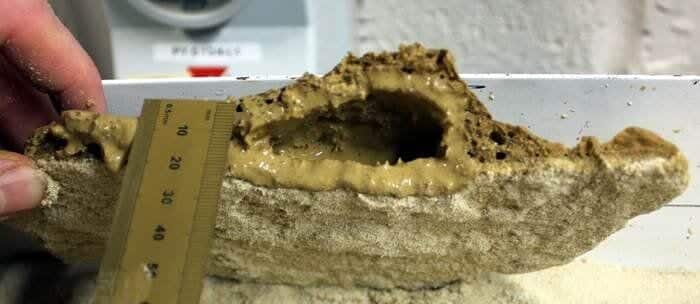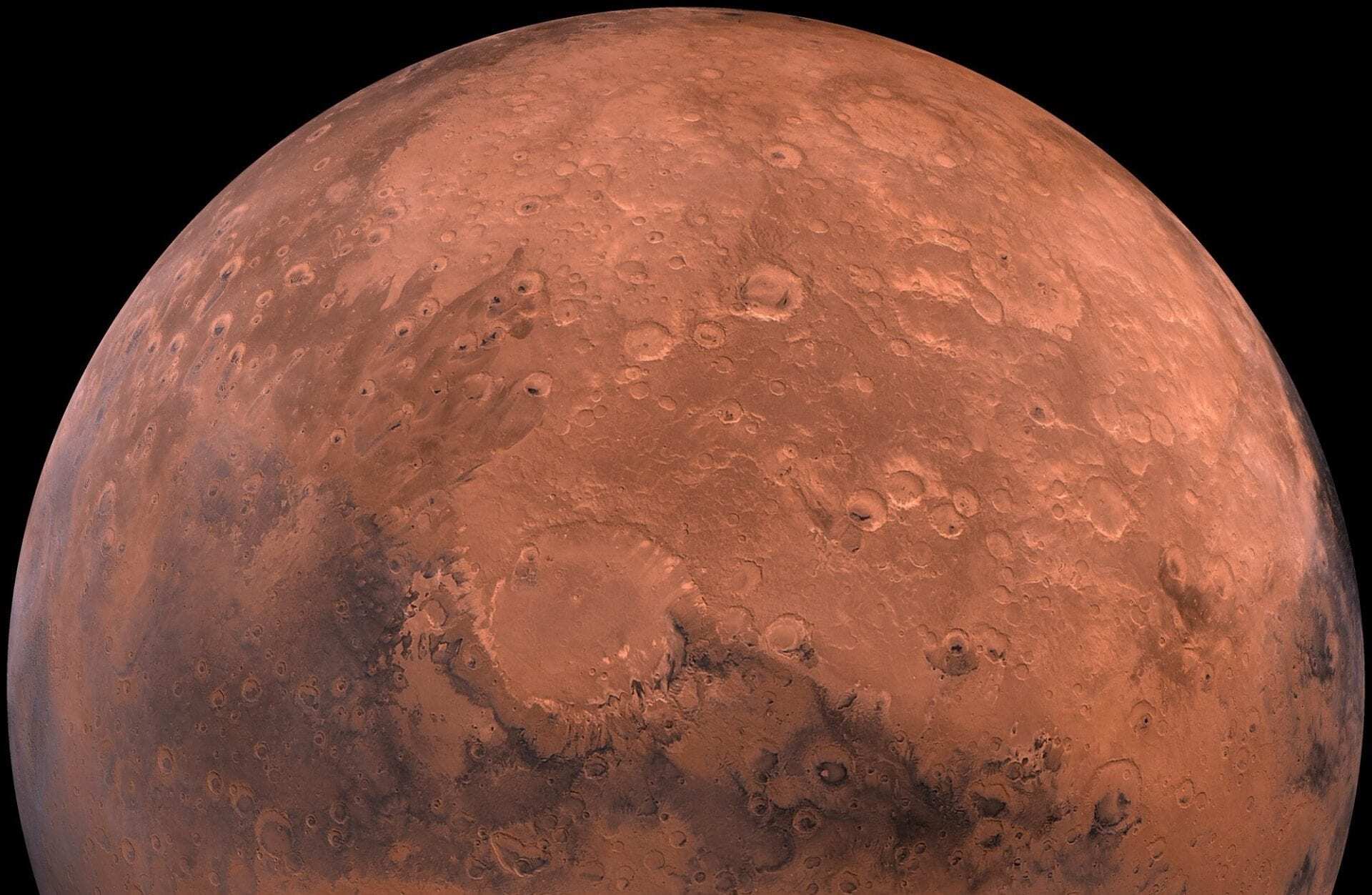Mars today has no active volcanoes, much of the heat stored inside the planet has been lost over millions of years creating a thick outer crust preventing molten rock reaching the surface.
A study today of the planet’s surface shows possible traces of another form of volcanism – sedimentary volcanism. On Earth sedimentary volcanism applies to eruptions of mud, shale and mud diapirs, but how does a mixture of sediment and water behave in the open air on the Red Planet?
Conditions on Mars are far more extreme, with the pressure exerted by the atmosphere is 150 times lower and surface temperatures having an average of -63 °C (210 K; −81 °F) that can reach 20 °C depending on situ values.
An international research team including Susan Conway, a CNRS researcher at the Laboratory of Planetology and Geodynamics (CNRS/Université de Nantes/Université Angers) recreated martian conditions in a low-pressure chamber to observe the flow of mud.

These experiments showed that the mud can behave in the same way as certain lava flows on Earth that are called pahoehoe and are characterised by numerous lobes. On Mars, the outer surface of the mud would freeze on contact with the air, while the inner core remains liquid.
This liquid can break the frozen crust to form a new flow lobe that refreezes. These results confirm that sedimentary volcanism is indeed possible on Mars, and invites the scientific community to review Martian geological structures previously interpreted to be caused by lava.
CNRS (Délégation Paris Michel-Ange)
Header Image Credit : Public Domain





